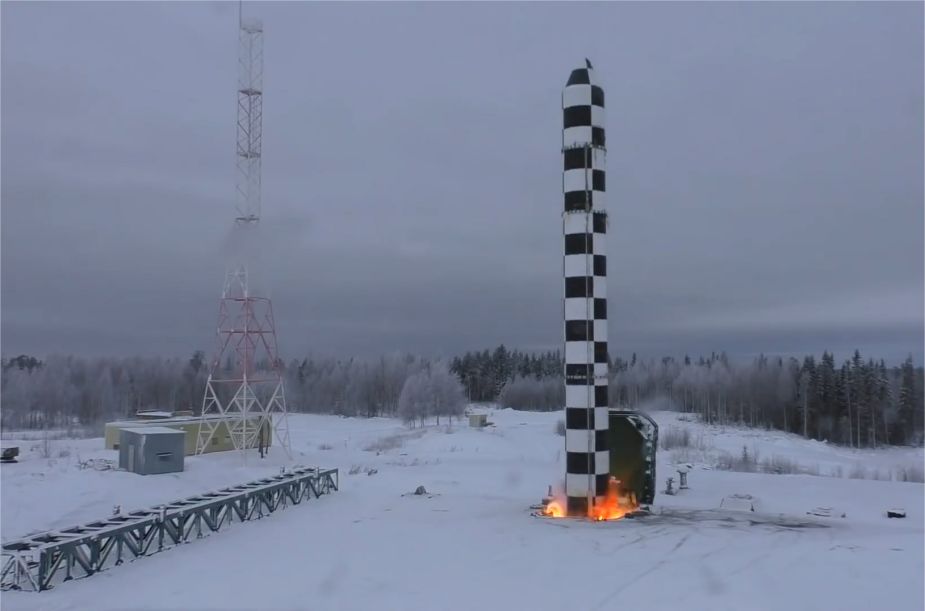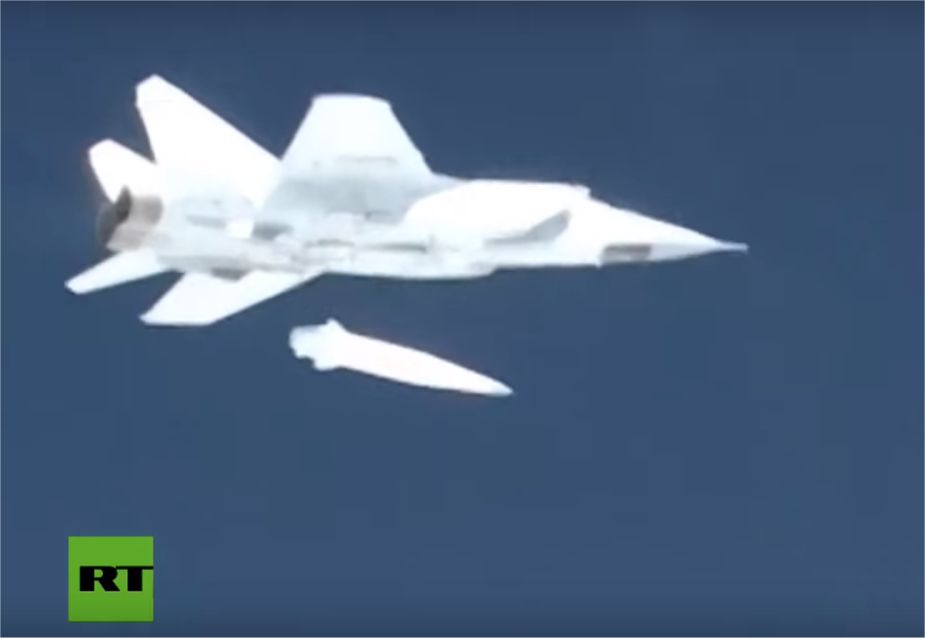Russian President Vladimir Putin announced the creation of new offensive weapons capable of breaking through existing missiles shields, including the US ground and seaborne missile defense under deployment. His statement triggered a wave of publications about the weapons. However, the legal aspects of the design, flight tests and deployment of the weapons in the context of international treaties, including START-3, have not been covered so far, the Nezavisimoe voennoe obozrenie (Independent Military Review) writes.

Second launch of ICBMs 15A28 / RS-28 "Sarmat". Polygon Plesetsk, March 29, 2013 (Picture source mil.ru).
The heavy Sarmat ICBM has to replace Voevoda missiles whose life cycle has expired. Sarmat launch weight exceeds 200 tons. It can carry a wide range of nuclear high-power charges, including hypersonic ones, and modern means to break through missile defense.
Sarmat will be superior to Voevoda by the range, the number and yield of reentry vehicles. Sarmat is a new type of ground-based ICBM. START-3 does not ban the production, trials and deployment of new types of ICBM.
It only limits the number of strategic carriers and their warheads. The treaty stipulates that the number of deployed ICBM, submarine-launched and heavy bomber-carried ballistic missiles should not exceed 700 units for each party, while the number of deployed and non-deployed launchers should be below 800. The treaty limits the number of warheads on deployed missiles and nuclear charges on heavy bombers by 1550 units for each party.
Putin said the Kinzhal airborne missile has a maximum speed of Mach 10.0 and a range of over 2000 km. It can maneuver on any stage of the trajectory and can carry nuclear and conventional charges. The missile is carried under the fuselage of MiG-31 aircraft. Since December 1, 2017 it has been on test combat duty at the airfields of the Southern Military District.
Kinzhal missile has no aerodynamic surfaces. It is equipped with small aerodynamic fins. Such a weapon can be rated as an airborne cruise missile which flies most of the path due to aerodynamic lifting power. If most of the flight path goes along a ballistic trajectory, the weapon can be rated as air-to-surface ballistic missile. If a missile maneuvers most of the flight, it cannot be rated as ballistic. It should belong to a broader class of air-to-surface missiles which covers all air-launched weapons to destroy surface targets.

Print screen of RT video on March 1, 2018, showing a Russian MiG-31 fighter jet releases the new Kinzhal hypersonic missile during a test at an undisclosed location in Russia.
START-1 which was valid until December 5, 2009 banned the production, tests and deployment of airborne ballistic missiles. START-3 does not ban the production, tests and deployment of air-to-surface missiles, including airborne ones. START-3 classifies nuclear-armed air-to-surface missiles as a weapon of heavy bombers. The protocol to the treaty defines a heavy bomber as a bomber of that or another class meeting the following criteria: the flight range with a 7500kg payload with full internal and external fuel tanks, but without refueling, at an optimal flight profile which ensures minimal fuel consumption per one kilometer and after-landing fuel balance not exceeding 5% shall exceed 8000 km. The aircraft shall have long-range nuclear missile launchers.
MiG-31 aircraft which carries Kinzhal does not meet any of the mentioned criteria and therefore cannot be classified as a heavy bomber. Thus, neither MiG-31, nor its missiles and nuclear or non-nuclear charges fall under START-3 restrictions for strategic carriers and their munitions.
The gliding winged reentry vehicle of Avangard strategic complex can fly to an intercontinental distance with hypersonic speed of over Mach 20.0 and maneuver in altitude and along the course. Test trials of the reentry vehicle have been successfully completed and the serial production of the missile has been launched.
Missiles with gliding reentry vehicles considerably differ by the flight trajectory from currently operational ballistic and cruise missiles. The flight of a missile with gliding winged reentry vehicle includes an active section when the engine operates and a hypersonic gliding flight in the atmosphere of the reentry vehicle which maneuvers in altitude and direction.
© Copyright 2018 TASS. All rights reserved. This material may not be published, broadcast, rewritten or redistributed.















